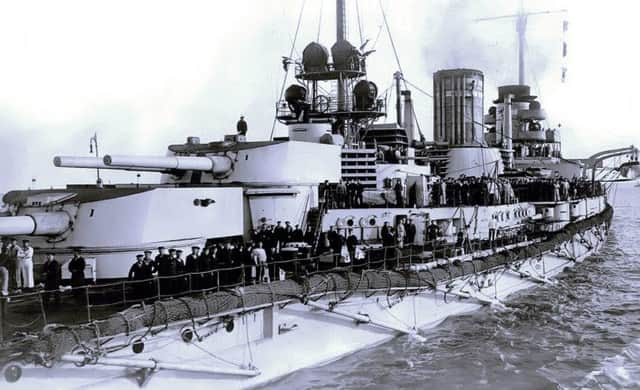Scarborough poised to remember tragic day of sacrifice


However what is perhaps less well known is that one of the first waves of German bombardment targeted the north east coast, causing huge damage to Whitby and Scarborough.
On the forthcoming 100th anniversary the seaside towns’ sacrifices will be remembered once again on December 16 as they commemorate the centenary of the shelling which left 20 people dead.
Advertisement
Hide AdAdvertisement
Hide AdA maroon will be fired from Scarborough Castle, to commemorate the attack, after the name of each of the victims is read out at a special dawn ceremony in the town.
And another service will be held at Manor Road Cemetery, where wreaths will be laid on a new cairn bearing the names of all those who died.
Michael Knaggs, a volunteer at the Scarborough Maritime Heritage Centre, said: “Scarborough will have another 15 minutes of fame on the morning of December 16, we know that.”
The bombardment of Scarborough began just after 8am on the cold December morning – the early hour and the winter weather meaning the number of casualties were fewer than they might have been.
Advertisement
Hide AdAdvertisement
Hide AdTwo schools in the town were hit. Mr Knaggs said: “If they had been hit a little later, a lot of school children would have died. At one of them, 200 children would have been killed easily. So in that sense, it was quite lucky that it was early in the morning.”
But 18 civilians were killed as a result of the raid, including 14-month-old John Shields Ryalls, which led Winston Churchill to call the Germans “baby killers”.
The outrage caused by the killing of innocent civilians led to the Government using the Scarborough bombardment in its recruitment drive.
Mr Knaggs said: “Its most important thing was the fact they used it publicity-wise to stir up bad feeling against the Germans after what had happened in Belgium earlier in the war. So, for propaganda reasons, it was very important.”
Advertisement
Hide AdAdvertisement
Hide AdOne propaganda poster simply stated: “Remember Scarborough! Enlist now.”
Another, issued within weeks of the shelling, bore the headline: “Avenge Scarborough – up and at ’em now.”
The text read: “The wholesale murder of innocent women and children demands vengeance. Men of England, the innocent victims of German brutality call upon you to avenge them.”
Mr Knaggs said: “At the time, Scarborough was a very famous holiday resort, lords and ladies and the royal family had been here.”
Advertisement
Hide AdAdvertisement
Hide AdFour of the fatalities that day came from the same family and the Government used photographs of their house on its posters.
Mr Knaggs said: “Out of the 18 deaths, the four, the Bennett family in Wykeham Street, that was the most tragic. Four people out of seven in the one household.”
Another victim was 15-year-old George Harland Taylor – the only Boy Scout to die in Great Britain during the First World War.
Mr Knaggs said he had discovered new information through his research into the Scarborough bombardment.
Advertisement
Hide AdAdvertisement
Hide AdHe said it was originally believed that Scarborough was hit by around 500 shells but he has now confirmed that 776 shots were fired at the town.
“Eighteen people died in Scarborough and about 200 were injured. Over 200 buildings were hit. There were 776 medium format shells fired in 29 minutes, which is quite something,” he said.